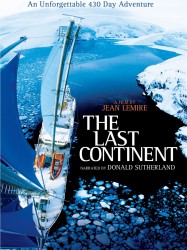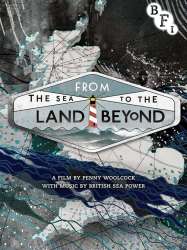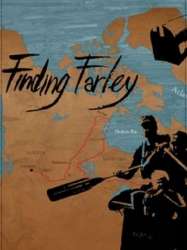Life at the End of the Rainbow is a film of genre Documentary
Life at the End of the Rainbow (2002)

If you like this film, let us know!
- Infos
- Casting
- Technical infos
- Photos
- Videos
- Film quotes
- Characters
- Music
- Awards
Length 55minutes
Genres Documentary
Life at the End of the Rainbow (2002) is a documentary by Australian filmmaker Wayne Coles-Janess about the small farming community of Rainbow, population 500, which lies on the edge of the Big Desert, North Western Victoria, Australia. It is 55 minutes long.
Synopsis
The area was originally considered worthless by European-Australian settlers, who fenced it off and abandoned it. The town was established around the start of the 20th century by German immigrant settlers. Its population increased after the first and second World Wars due to the government's policies of subsidies to encourage settlement by veterans. The people of Rainbow have struggled to eke out an existence for more than three generations, with global economics and government policy compounding the difficulties of marginal farming. The film draws from home movies from the 1940s to portray the people in this town.Comments
Leave comment :
Suggestions of similar film to Life at the End of the Rainbow
There are 8951 with the same cinematographic genres, 8041 films with the same themes (including 1 films with the same 5 themes than Life at the End of the Rainbow), to have finally 70 suggestions of similar films.If you liked Life at the End of the Rainbow, you will probably like those similar films :

Sharkwater (2006)
, 1h29Directed by Rob Stewart
Origin Canada
Genres Documentary
Themes Films about animals, Environmental films, Seafaring films, Politique, Transport films, Films about sharks, Documentary films about animal rights, Documentaire animalier, Documentary films about law, Documentary films about environmental issues, Mise en scène d'un poisson, Political films, Documentary films about nature
Actors Trey Parker, Matt Stone, Rob Stewart
Rating78%





Depuis l'enfance, Rob Stewart se passionne pour les requins. À tel point qu'il est devenu biologiste et photographe sous-marin afin de pouvoir nager avec eux, décrypter leur mystère et déconstruire le mythe du requin mangeur d'hommes. Ce mythe, entièrement fabriqué, serait selon lui responsable de l'indifférence qui entoure, un peu partout dans le monde, le massacre de la population de requins à des fins commerciales. Du Costa Rica aux Îles Galapagos en passant par le Guatemala, Stewart et l'équipage de l'activiste des mers Paul Watson tentent de dénoncer et de mettre en échec les braconniers à la solde de mafias asiatiques soutenues par des gouvernements corrompus. Il y va de l'équilibre écologique de la planète.
 , 1h33
, 1h33Directed by Jacques-Yves Cousteau, Philippe Cousteau, Marshall Flaum
Origin France
Genres Documentary
Themes Environmental films, Seafaring films, Transport films, Documentary films about environmental issues, Documentary films about nature
Rating71%





In December 1975 The Cousteau Society starts a four months expedition through Antarctica. The expedition also relies on Monaco's Oceanographic Museum and on La Rochelle Natural History Museum, that latter represented on board by Raymond Duguy (1927 - 2012), its by time director.

The Last Continent (2007)
Genres Documentary
Themes Environmental films, Seafaring films, Transport films, Documentary films about environmental issues
Actors Donald Sutherland
Rating67%





À bord du voilier Sedna IV, Jean Lemire et son équipe se sont engagés pour une ultime mission. Une mission extrême, 430 jours d'expédition et un hivernage en Antartique, totalement isolés, au bout du monde.Dans la foulée des grands explorateurs d'hier, ils ont repousser les limites pour livrer aux spectateurs une épopée unique, motivé par une formidable quêtes d'aventures, de découvertes et de rêves...

Hiroshima (2005)
, 1h29Origin United-kingdom
Genres Drama, Documentary
Themes Environmental films, Seafaring films, Transport films, Aviation films, Documentary films about environmental issues, Documentary films about war, Documentary films about historical events, Documentary films about nuclear technology, Documentary films about technology, Political films, Documentary films about World War II
Actors John Hurt, Ed Bishop, Katsumi Chō, Naoko Mori, Ian Shaw, Shane Rimmer
Rating77%





À 8h15 précises ce 6 août 1945, le monde a changé. 40.000 personnes trouvent instantanément la mort, mais ce sont bien 200.000 décès qui seront provoqués par l´explosion de la première bombe nucléaire sur Hiroshima, au Japon. Ce documentaire exceptionnel de 90 minutes n´est pas « Un énième film anti-guerre » déclare son réalisateur Paul Wilmshurst, « mais bien l´analyse neutre et objective d´une décision cruciale. Il ne s´agit pas d´être pro-américain ou pro-japonais, j´ai simplement voulu raconter la vérité. » Une vérité technologique, scientifique, militaire et politique qui se dessine dans les trois semaines précédant l´attaque, alors que le premier essai nucléaire vient de se dérouler dans le désert du Nouveau-Mexique, aux États-Unis. Le spectateur se retrouve alors dans la pièce où est prise la décision ultime, à bord de l´Enola Gay pendant son trajet fatidique, à l´intérieur de la bombe au moment de l´explosion, puis dans les rues dévastées d´Hiroshima.

World Without Sun (1964)
, 1h30Directed by Jacques-Yves Cousteau, Albert Falco, Simone Melchior
Origin France
Genres Documentary
Themes Environmental films, Seafaring films, Transport films, Documentary films about environmental issues, Documentary films about nature
Rating74%





World Without Sun, a documentary produced and directed by Jacques Cousteau in 1964 chronicles Continental Shelf Station Two, or "Conshelf Two", the first ambitious attempt to create an environment in which men could live and work on the sea floor. In it, a half-dozen oceanauts lived 10 meters down in the Red Sea off Sudan in a star-fish shaped house for 30 days. The undersea living experiment also had two other structures, one a submarine hangar that housed a small, two man submarine referred to as the "diving saucer" for its resemblance to a science fiction flying saucer, and a smaller "deep cabin" where two oceanauts lived at a depth of 30 meters for a week. The undersea colony was supported with air, water, food, power, all essentials of life, from a large support team above. Men on the bottom performed a number of experiments intended to determine the practicality of working on the sea floor and were subjected to continual medical examinations. The documentary, 93 minutes long, received wide international theatrical distribution, and was awarded an Academy Award for Best Documentary, as well as numerous other honors. It was Cousteau's second film to win Best Documentary, the first being "The Silent World" released in 1956.

Taken for a Ride (1996)
, 55minutesOrigin USA
Genres Documentary
Themes Environmental films, Transport films, Films about automobiles, Rail transport films, Documentary films about business, Documentary films about environmental issues, Documentary films about technology, Road movies
Rating78%





Taken for a Ride begins with interviews on the inefficiencies and congestion on Los Angeles' highways. Next, the film displays a variety of archival footage on streetcar systems around the United States, demonstrating that streetcars were a widespread and efficient means of transportation. The film continues into a description of the General Motors streetcar conspiracy, starting with a history of National City Lines and Pacific City Lines and General Motors' investment in both companies. The film builds the argument that streetcar systems purchased by these companies were deliberately sabotaged through service reductions and fare increases, then replaced with profitable, less convenient, bus systems. Next, the film makes a connection between this conspiracy and the construction of the Interstate Highway System and the suburbanization of America in the face of the Highway revolts in the 1960s and 1970s. The film ends with footage of the reduction of Philadelphia's trolleybus system at the time of filming.

Directed by Penny Woolcock
Origin United-kingdom
Genres Documentary
Themes Films about animals, Environmental films, Seafaring films, Transport films, Documentary films about environmental issues, Documentary films about technology, Documentary films about nature
Rating79%






Waterwalker (1984)
, 1h27Directed by Bill Mason
Origin Canada
Genres Documentary
Themes Environmental films, Seafaring films, Sports films, Transport films, Documentary films about sports, Documentary films about environmental issues, Documentary films about technology
Actors Bill Mason
Rating80%






Oceans (2010)
, 1h43Directed by Jacques Perrin, Jacques Cluzaud
Origin France
Genres Documentary
Themes Films about animals, Environmental films, Seafaring films, Transport films, Documentaire animalier, Documentary films about environmental issues, Documentary films about nature, Children's films
Actors Pierce Brosnan, Jacques Perrin, Rie Miyazawa, Pedro Armendáriz (fils), Oleg Basilashvili, Jiang Wen
Rating76%





Oceans presents details and facts about the journey of the ocean. The film begins on a beach and there are boys and one of them wonders what the ocean is. The scene cuts to the Galapagos where a clan of marine iguanas and horseshoe crabs wander.

Finding Farley (2009)
, 1h2Origin Canada
Genres Documentary
Themes Films about writers, Environmental films, Seafaring films, Sports films, Transport films, Documentary films about sports, Documentary films about environmental issues, Documentaire sur une personnalité, Documentary films about technology, Documentary films about nature
Rating74%





 Connection
Connection